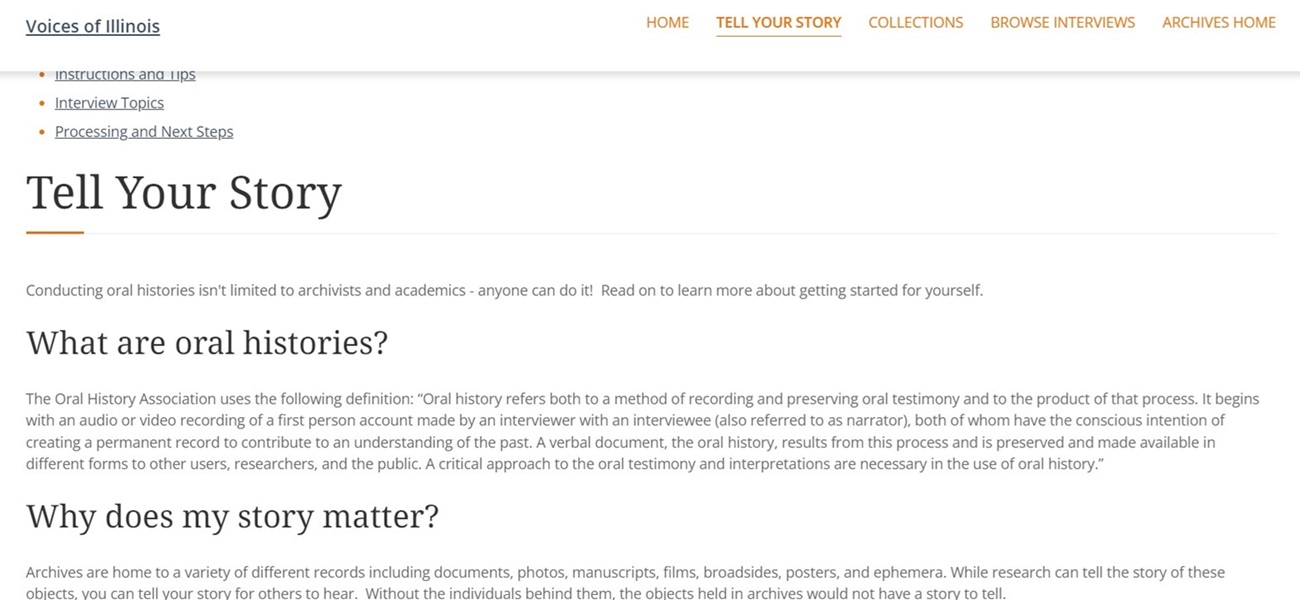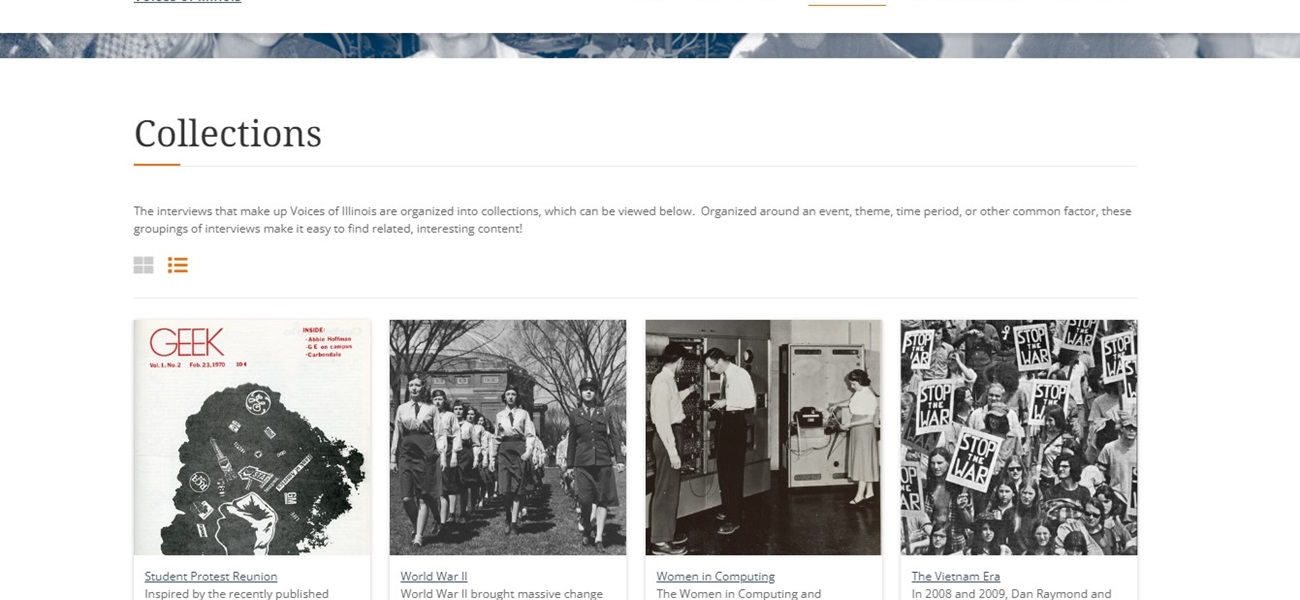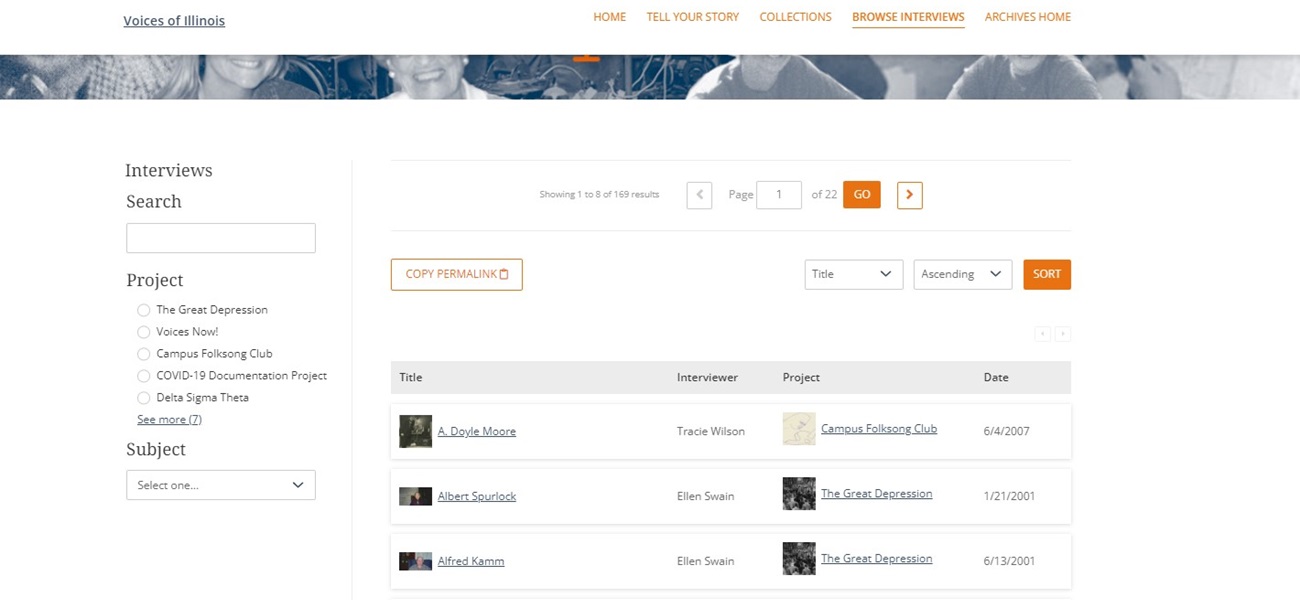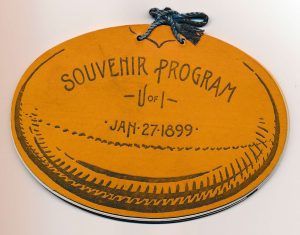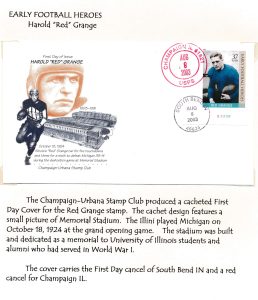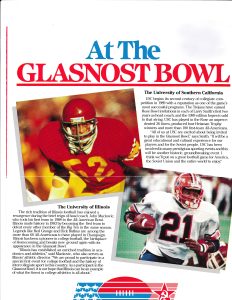A New Platform for Oral Histories
In the spring and early summer of 2024, Archives Research Assistant Spenser Bailey created a new, Omeka-based Voices of Illinois oral history portal.* This process entailed making stylistic choices, developing search functions and organizational presentation for the interview collections, and transferring the existing 170 interviews over from the legacy platform. The new portal is more than just an exact replacement – Omeka’s versatility allowed for the creation and deployment of an individual interview search/browse page, which the old portal did not have.
See the gallery below for examples of the new portal’s features:
View the new portal for the first time using the button below!
The new Voices site is still under construction, with finishing touches being completed. Additionally, two new collections, chronicling the Unit One Living-Learning Community and queer culture in Champaign-Urbana (produced by students in Siobhan Somerville’s GWS 467/HIST468 class), are in progress and will be the first to deploy solely on the new portal. Please contact Archivist for Student Life and Culture Ellen Swain if you have any questions about oral histories, would like to discuss a collaboration with the Archives, or have suggestions about the new site.
About This Project
The original Voices of Illinois oral history portal was created as a part of the University of Illinois sesquicentennial celebrations in 2017-18. For the first time, oral histories and other historical audio recordings were available on a centralized, easy-to-navigate platform. This increased the visibility and accessibility of these valuable collections, which, in turn, allowed scholars and the general public to use them for academic research and personal enjoyment. I was an undergraduate at the University in the fall of 2017, and I used an anecdote from a “Great Depression” interview to highlight a point in one of my first ever academic papers.
Some of the sets of interviews in Voices came from oral history initiatives from the University Archives. For example, in 2000-01, Student Life and Culture Archivist Ellen Swain interviewed 44 alumni from the 1920s and 1930s, and recorded their memories of attending the University before and during the Great Depression. These coordinated projects contribute immensely to the historical record, as large sets of interviews allow for comparisons and different perspectives on some of the same subjects. Notably, in at least one interview, the subject mentioned a story about some of his fellow students, one of whom was the subject of another interview! Other recordings featured in the portal are digitized surrogates of historical conversations, like the Allen Recordings of Agricultural History. Created by alumnus Ralph Allen from the 1940s to the 1960s, some of these predate the University Archives, and preserve the memories and perspectives of those who have long since passed away.
Further, since the creation of Voices of Illinois, Archives personnel have continued work in oral history, allowing for the Archives’ audio collections to grow in size and scope. Natural and Applied Sciences Archivist Bethany Anderson spearheaded the COVID-19 Documentation Project, which resulted in 45 interviews with University of Illinois System personnel, in which they recounted memories of and responses to the COVID-19 pandemic.
However, the Voices portal, which is based on WordPress, has reached the end of its useful life. Archives personnel had to identify and deploy a replacement platform to avoid losing the capability and centralized resources that Voices brings. After consultation with the Library’s IT department, Omeka – a free “open-source web publishing [platform] for sharing digital collections” was selected as the replacement for the outdated WordPress format of the original Voices portal.
*The University Archives would like to thank Krista Gray, program officer at the Illinois History and Lincoln Collections, and Alex Dryden, research programmer with Library IT, for their valuable assistance with the new Voices portal. Krista introduced Spenser Bailey to Omeka, and provided him with templates and an example Omeka site, which he then built into the new portal. Alex provided detailed guidance, technical support with Omeka, and solutions and encouragement, without which the new portal could never have been completed.
